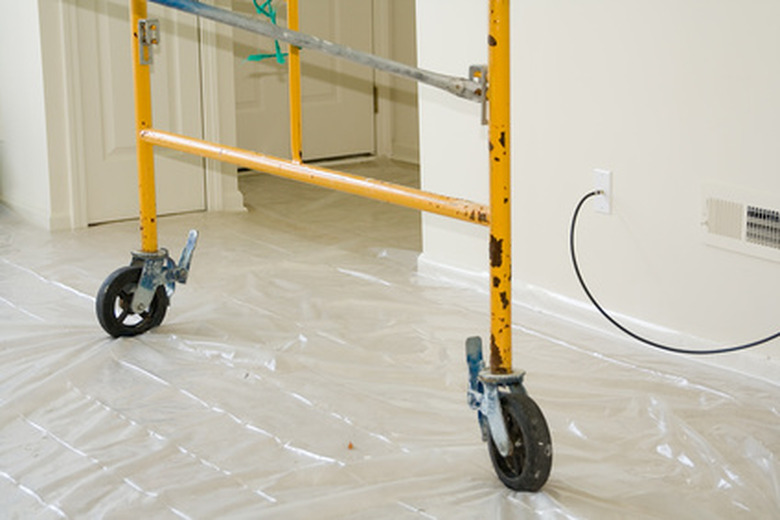Cheap Soundproofing Alternatives
The only sure way to truly soundproof your room is to build what amounts to a second room inside it. You cannot entirely prevent sound from traveling along beams, joists and other structural elements. You can reduce the amount of sound coming in or out of a room, however, by using some inexpensive and simple tricks.
Drywall
Drywall
If you have the resources, installing an extra layer of drywall can help. Hang the new sheets of drywall over the joints in the existing drywall so that if any sound is seeping out through cracks your new drywall will block it.
Heavy Doors
Heavy Doors
Light doors let a lot of sound pass through them. Replacing hollow doors with solid ones will cut down on sound transmission. A solid wooden door or a "sandwich" door filled with sand can help with soundproofing.
Double-Paned Windows
Double-Paned Windows
Windows can transmit a lot of sound. You can cut this down a great deal by choosing double-paned windows that have vinyl frames. They not only cut down on sound transmission but also save energy by insulating better than regular windows.
Soundproofing Insulation
Soundproofing Insulation
Soundproofing insulation material is another way to cut down on noise coming into or out of your room. Materials like Safe'n'Sound resemble ordinary fiberglass insulation only denser and are applied in much the same way. You can use them in walls, ceilings and even floors. Another system is QuietZone, which includes soundproofing batts, wall studs and a floor mat.
Ceilings
Ceilings
You can apply soundproofing material to ceilings, which can range from specially designed acoustic tiles to a layer of textured paint. Textured paint also has the advantage of helping conceal cracks and imperfections in the ceiling.
Interior Decoration
Interior Decoration
If expensive remodeling is out, you still have plenty of options. The way you decorate a room can do a lot to control the sound that gets in and out. Rooms with bare walls and hard floors are much noisier than rooms with soft carpets on the floor. Hang thick drapes and lay carpets and rugs to reduce sound. Choose upholstered furniture with textured coverings to help deaden sound.
Wall Hangings
Wall Hangings
Any thick material applied to your walls will help cut down on sound transmission; even a layer of egg-box cartons has sometimes been used for makeshift soundproofing). Get creative with thick drapes, woven wall hangings and even decorative rugs.
Weather Strip
Weather Strip
Don't forget the cracks around your doors and windows. If drafts are getting in, sound can get in and out. Weatherstrip can cut down on sound transmission, and it saves on your heating bills too. A door sweep at the bottom of the door can help a lot as well.
Mats
Mats
Placing a foam rubber mat under your carpet helps absorb sound. You can also cut individual mats for your speakers from 1- or 2-inch thick foam, thus cutting down on the amount of noise transmitted via the floor.
Cite This Article
MLA
Edwards, Clare. "Cheap Soundproofing Alternatives" sciencing.com, https://www.sciencing.com/cheap-soundproofing-alternatives-24232/. 24 April 2017.
APA
Edwards, Clare. (2017, April 24). Cheap Soundproofing Alternatives. sciencing.com. Retrieved from https://www.sciencing.com/cheap-soundproofing-alternatives-24232/
Chicago
Edwards, Clare. Cheap Soundproofing Alternatives last modified March 24, 2022. https://www.sciencing.com/cheap-soundproofing-alternatives-24232/
